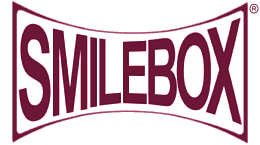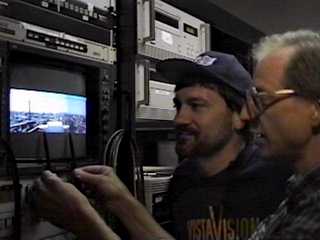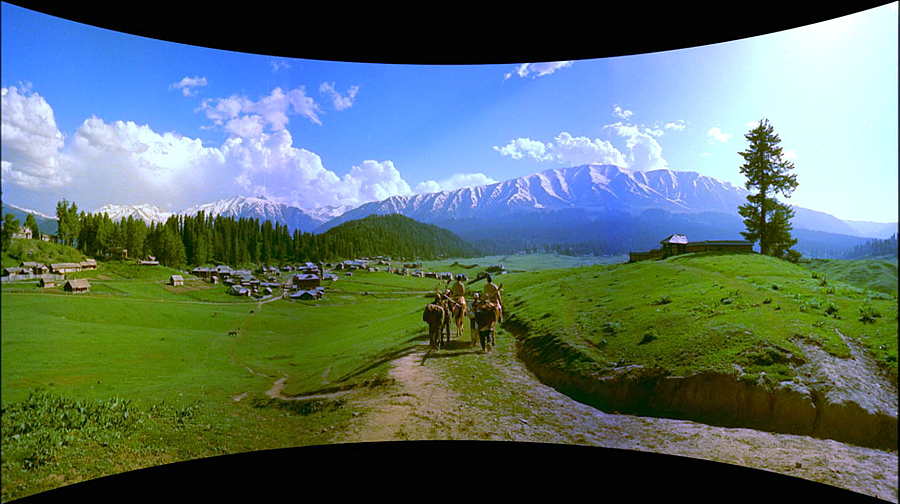THE
PROCESS
SIMULATING CINERAMA
IN A DOCUMENTARY
Greg Kimble and David Strohmaier monitor the assembly, in digital video, of a complete Cinerama image made from three individual films.
Showing Cinerama film clips in this documentary was a challenging task. First a way to telecine from the original 3 panel - 6 perforation camera negatives had to be developed. Special effects expert and Cinerama buff Greg Kimble labored for several weeks with the top engineers at Pacific Ocean Post and Digital Magic in Los Angeles to perfect a technique to do this.
By using a Rank Ursa Gold Telecine with custom modifications, each panel was separately converted into digital video. Once control of all three images was in the digital domain the color between panels was corrected from the faded negatives. Using two D-1 decks and a modified Kaleidoscope, the images were combined and blended together into a letterbox image that matched the Cinerama aspect ratio (2.59:1).
Three Cinerama films are combined to form a "letterbox" image.
Next the filmmakers and engineers wanted to simulate the Cinerama screen by curving and bending the image as if it were on a 146 degree Cinerama screen. This was done with a special group of settings on a state-of-the-art graphics workstation called an "Inferno." Greg and the engineers came up with the affectionate name for this process, "Smilebox". After seeing some of these "Smilebox" clips inter-cut into the documentary in 2001, several Cinerama fans excitedly commented on how much it looked like real Cinerama.
The Inferno workstation transforms the letterbox image to create a simulation of the Cinerama screen. This illustration is taken from a poor quality VHS tape. The image below, which is a frame from Search For Paradise gives a better representation of the state of the art Smilebox system today.
Smilebox frame from Search For Paradise In addition to providing a simulated Cinerama image, there is less lost detail since a larger portion of the television screen is used. An unexpected benefit of the smilebox process is that distortions that would be normal when you display a curved image on a flat screen seem to disappear.
The Use of The Smilebox Logo
Back to Index


